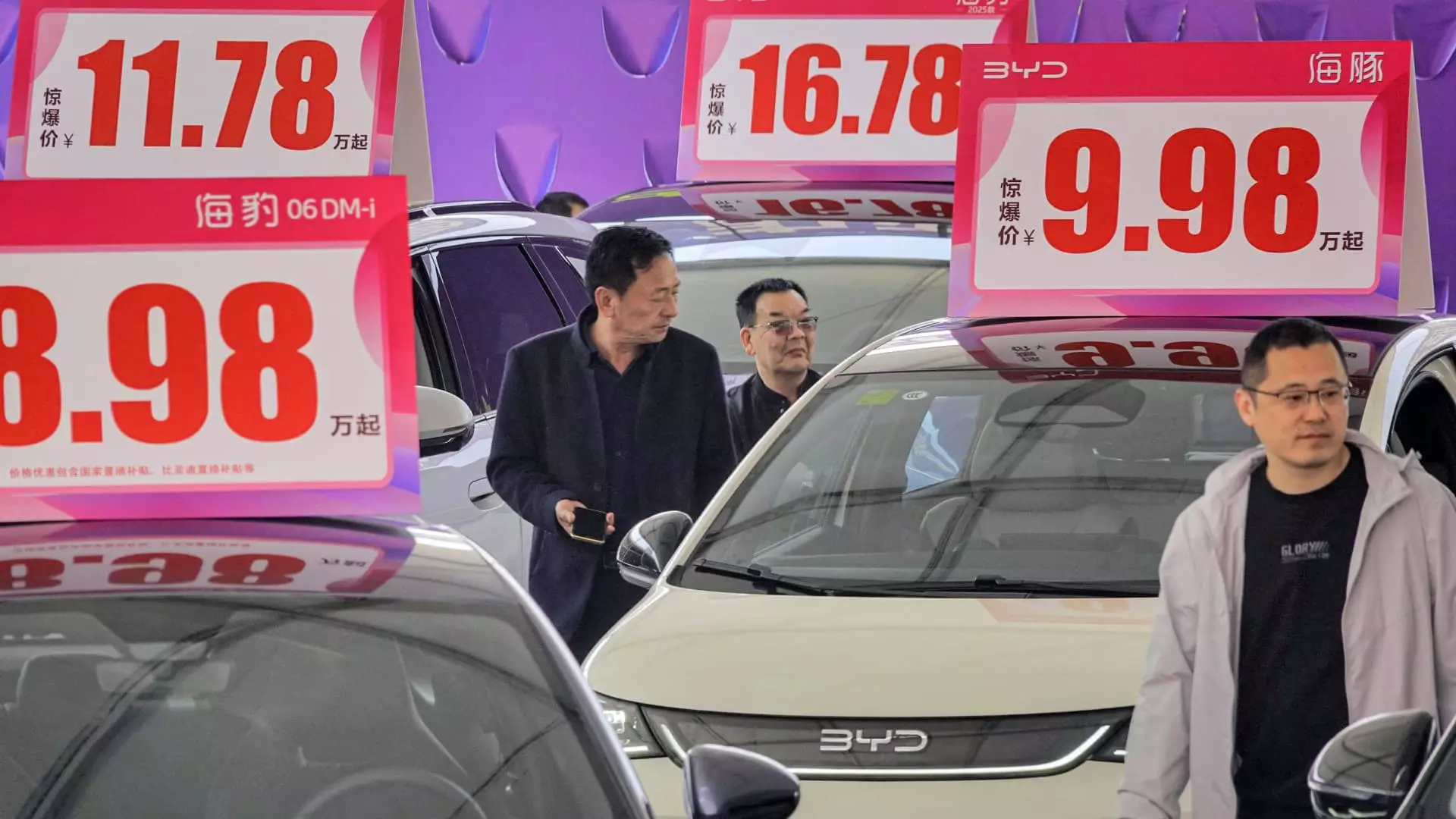China’s electric vehicle (EV) market is erupting into an intense price war, primarily driven by industry titan BYD’s staggering price cuts of up to 30% on various models. What’s driving this drastic strategy? Certainly, competition from both local and foreign automakers plays a significant role, but one has to wonder whether these cuts serve as a short-term tactic for market dominance or signal deeper, underlying issues within the sector. Price slashing, while it may boost sales in the immediate term, poses a greater risk of deflation that could stymie healthy long-term growth. A market fueled purely by aggressive discounts lacks sustainability; it invites a downward spiral rather than fostering meaningful technological advancements or improvements in quality.
This race to the bottom raises critical questions for China’s larger economic landscape, impacting both domestic and foreign competitors. As other Chinese manufacturers scramble to match BYD’s aggressive pricing, the industry finds itself treading on perilous grounds. The immediate effect is a heightened state of anxiety—not just among smaller players fearing extinction, but across the entire automotive ecosystem that relies heavily on consumer confidence and investment.
The Silent Anxiety Among Automakers
Industry analysts have noted an unsettling “shock” within automotive circles as many manufacturers grapple with the ramifications of BYD’s cuts. What remains unspoken in discussions about price reductions is the looming fear of a systemic collapse similar to what plagued China’s real estate market following the Evergrande crisis. It’s an apt analogy; both markets once seemed invincible until financial irregularities led to a catastrophic unraveling. The constant pressure to cut prices, while likely to attract short-term consumer attention, could erode the perceived value of these electric vehicles, making them mere commodities rather than statements of innovation.
Furthermore, as traditional manufacturers reel from the impact, the long-term consequences could lead to a homogenized market filled with low-cost, low-quality products. A thriving auto sector should ideally aim for innovation and quality, not merely competition based on price.
Government Policies: A Double-Edged Sword
Chinese government policies have historically driven the push for electric vehicles, reflective of a national ambition to lead the global market in new energy technologies. However, these very policies seem to be invoking an ‘involution’—a phenomenon where businesses become locked in non-productive competitive practices. Subsidies for new energy vehicles have fostered rapid growth but at the price of quality and sustainability, raising concerns among economists about long-term market health.
Morgan Stanley’s Chief China Economist, Robin Xing, articulated a vital concern: while rhetoric around rebalancing towards consumer-driven growth has intensified, recent developments illustrate a continued reliance on a supply-driven model. This could mean that the repercussions of current pricing strategies are not merely cyclical but potentially systemic, locking the market into a pattern of deflationary pressure.
Impact Beyond Borders: An International Concern
The ramifications of this Chinese price war are extending well beyond its borders, sparking retaliatory trade measures from markets like the European Union and the United States. Tariffs and duties imposed on China-made electric vehicles, ostensibly to protect their local industries, signal a growing unease about the ability of foreign automakers to compete against heavily subsidized Chinese brands. Given the current trajectory, BYD’s strategy could weaken global automotive landscapes, especially if countries with established manufacturers see their markets destabilized in the wake of unsustainable competition from China.
The European and U.S. markets might seem insulated at present, but as BYD’s recent achievements in Europe suggest, this escalation signals the reality of a new battleground. Competition in the mature markets could soon intensify as these players respond to Chinese pricing with their premium offerings that emphasize brand equity, technology, and consumer trust.
Consumer Behavior: A Shift in Expectations
Consumers’ perception of automotive brands is intricately tied to their perceived value. As prices fall, how does that impact the brand equity of automakers? The mental shift from luxury to affordability combined with fears of potential stagnation creates a complex psychological landscape for both manufacturers and consumers. The allure of lower prices could easily dissipate if the emotional connection to quality and reliability is strained.
As automakers, particularly BYD, superficially engage in fighting for market share, they risk creating a customer base that prioritizes price over innovation and quality. This could perpetuate a cycle where consumers hold off on purchasing, waiting for even lower prices, hence stalling the market altogether.
Ultimately, one must contend with the question: will the current campaign of aggressive price cuts lead to an invigorated market, or does it set the stage for economic fragility and diminished prospects for future innovations? The trajectory of China’s electric vehicle market is now a critical juncture, and its future could hinge on the choices made in the coming months and years.

